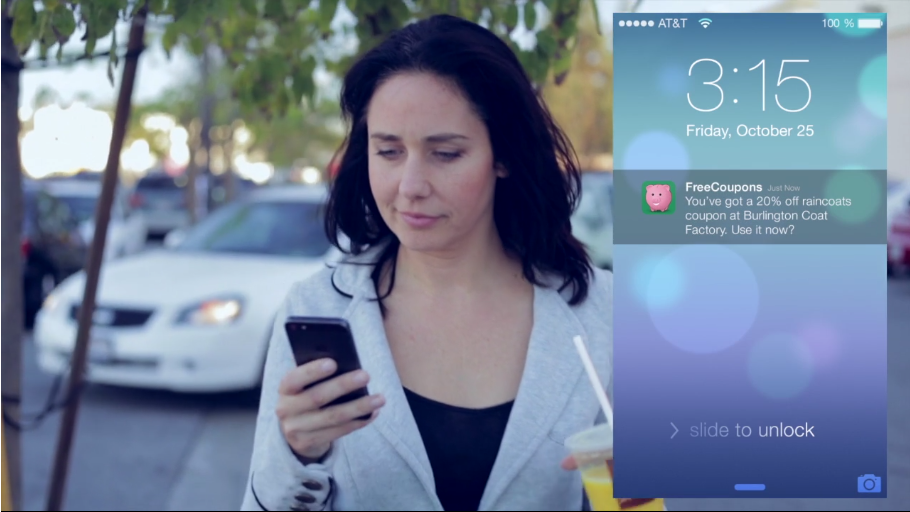
Ad or Not? Khloé Kardashian and Nordstrom
Impromptu family fashion shoot or something less innocent?
In fall 2012, Nordstrom began testing technology that allowed the retailer to track customers’ movements within its store via their smartphones’ Wi-Fi signals. Devices throughout the store would pick up the unique code broadcast by a smartphone and track the phone’s location – and the person carrying it –as it moved throughout the store. Nordstrom hoped the technology would teach them more about their customers’ shopping habits. But in-store signs disclosing the tracking made shoppers wary, and Nordstrom ended the test in May 2013, in part because of excessive negative feedback from consumers.
The reaction to Nordstrom’s test is not unique. Customers hate in-store phone tracking. An OpinionLab study from March found that 77% of shoppers thought in-store tracking was unacceptable, and 81% did not trust stores to keep tracking data secure. Consumer opinions were similar across age-groups.
But retailers remain keen on in-store tracking, in part because they see tracking as a tool to gather more information about their customers so they can better target advertising to them – sci-fi advertising a la Minority Report made real.
Tracking 2.0
And so this year a second wave of somewhat less invasive tracking, that requires consumers to download an app before seeing location-based ads, is being introduced. Foodie magazine Epicurious announced that it is teaming with inMarket to track consumers in supermarkets in order to send them coupons for discounts on recipe ingredients via an app. And Major League Baseball this season is using Citi Field, home of the New York Mets, to test its own phone tracking system to push ads for discounts when fans wander near the team store, among other things. But both Epicurious and MLB’s tracking would require consumers to have installed an app in order for the companies to contact the phones with deals – a kind of soft opt-in.
Yet the technology remains for advertisers to track all smartphones in-store, and it’s quietly being installed in more places. InMarket, which makes in-store Bluetooth beacons, claims to have access to 20 million shoppers already. And many stores don’t make clear whether they’re tracking you. This has Maryland considering a bill that would require stores tracking phones to post signs at all entrances to disclose the practice.
How you are tracked
Here’s how tracking works: All Wi-Fi and Bluetooth enabled devices have a MAC address, a 12-digit code that distinguishes, say, one iPhone from another iPhone or one laptop from another on the same Wi-Fi Network. When your device is looking for or is connected to a Wi-Fi or a Bluetooth hotspot, it broadcasts its MAC address. A retailer, by keeping track of the MAC addresses that are picked up by in-store hotspots, can see where a device goes in a store, how long it spends in a location — like how long a device is in the shoe section — and whether the same device returns to the same retail location or shows up at a different location for the same retailer.
And while a MAC address contains no Data that can be used to identify you, like your name, address, birth date, or Social Security number, it is possible for a retailer to cross-reference the address and thus put a phone number or email address to a device. So a store could pick up your phone’s Wi-Fi signal, cross-reference it to the email address you used to access the in-store Wi-Fi, and hit you with a marketing email for the shoes you’re looking at just now.
The tracking is not limited to customers who enter the store. Hotspots don’t know to halt tracking at the entrance, so a strong Wi-Fi signal from a department store could be tracking phones that pass on the sidewalk each day, or the laptops of the office workers at a different company upstairs. A store could be gathering information on your device without you ever setting foot inside.
Consumer options
Some companies who provide tracking technology, such as Nomi, allow consumers to opt-out of their tracking by entering their MAC addresses. And Smart Store Privacy, an arm of the Future of Privacy Forum, has an opt-out service in Beta testing that covers a handful of tracking companies. But not all companies offer opt-out services, and not all tracking companies have agreed to pay attention to the opt-out requests. Many stores are not upfront about whether they’re tracking smartphones, meaning many consumers don’t know who or what is watching them. Never mind that it’s hard to opt-out of tracking that you don’t know is happening.
U.S. Sen. Chuck Schumer, D- New York, asked the FTC last June to require an opt-out opportunity before stores can track shoppers’ in-store movements. The FTC has indicated that it is monitoring the rise of in-store tracking, but has yet to take any action.
So, the best option for consumers who don’t want to be tracked at all is to turn off their phone’s Wi-Fi and Bluetooth before entering a store. Or just leave the phone at home. Otherwise, be aware: Someone may be tracking your phone, and they probably want to show you an ad.
Impromptu family fashion shoot or something less innocent?
The pandemic has also triggered lawsuits over privacy issues with some video conferencing apps, and more.
Why the FTC should consider virtual influencers as it reviews its Endorsement Guides.


